
WELCOME TO CANADA’S AUTOMOTIVE AFTERMARKET
Why don’t you stay a while? By Allison Rogers With the pandemic came a new way of training. Now that
By Darryl Simmons
Train now—the world won’t wait for you to catch up
“IN OTHER WORDS: NO MATTER YOUR ROLE I N THE COLLISION REPAIR INDUSTRY, YOU WILL LEARN SOMETHING I F YO U TAKE THE ADVICE BETWEEN THESE PAGES.”

Why don’t you stay a while? By Allison Rogers With the pandemic came a new way of training. Now that
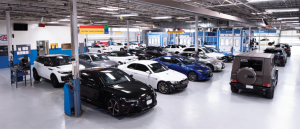
The question of OEM Certifications By Maddy Kylie The automotive industry is an industry like no other. Ripe with innovation
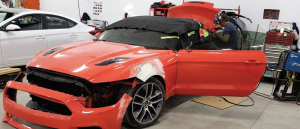
Certification is a step in the right direction for the automotive industry By Steve Leal The automotive industry is not

Looking to improve? Take responsibility By Jay Perry One of the most challenging parts of leadership is the issue of

How do you hire the perfect fit? By Chelsea Stebner Right People. Right Bus. Right seat? We hear so much
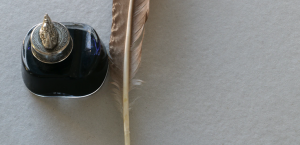
Train now—the world won’t wait for you to catch up By Darryl Simmons When was the last time you learned
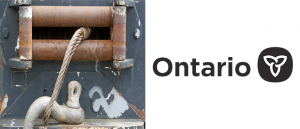
The scoop on Ontario’s new towing regulations By Max Reid This past year has shaken the Ontario towing industry to

In some parts of Canada, hiring is no longer easy as 1-2-3 By Bianca Mazziotti With the seemingly ever-present skills

OARA representatives talk informed, ‘disciplined’ buying decisions By Allison Rogers With salvage in such short supply and buyers vying for
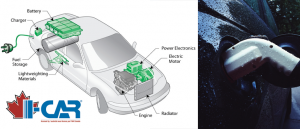
Andrew Shepherd gives insight on I-CAR’s new courses By Max Reid With automakers the world over announcing wide-scale conversions of
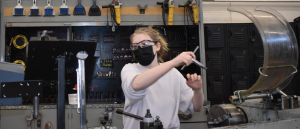
The state of the modern autoshop class By David DiCenzo Matthew Lyle clearly remembers helping lead the inaugural Electric Car
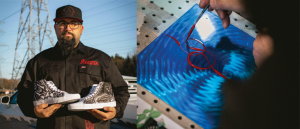
How Keegan De France finds zen By Max Reid If you love what you do, you’ll never work a day
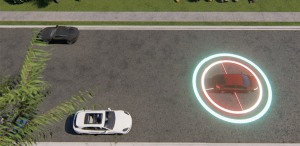
Canada’s ADAS calibration conundrum By Bianca Mazziotti and Allison Rogers The time to tackle advanced-driver assistance system (ADAS) calibration questions

Seven tips to secure top talent By Maddy Kylie Welcome to the Canadian aftermarket, where the average age of the
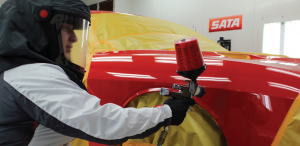
SATA Canada’s new apprenticeship course offering Do you have a trusted, skilled painter on your staff roster? If not, you
Car-Part customers have a wealth of training options available! Auto recyclers: Car-Part.com hosts free webinars nearly every week, covering hot topics and new features. You can also find tutorials, guides, and videos 24/7 at Products.Car-Part.com
Collision repairers and insurers: Integrated Car Part Pro (iPro) live webinars are regularly available, covering the Basic workflow and Advanced topics. On-demand webinars, guides, and videos are available any time at CarPartPro.com/Training
Training and support is available to all customers via phone or instant messaging (iCPM, iPro, or Live Chat). Request and receive help “on the spot” from experienced support staff throughout your business day.
For more information check out Car-Part.com
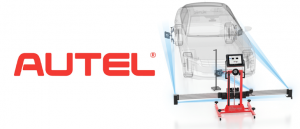
PROCESS IS PRECISION When it comes to the calibration of Advanced Driver Assistance Systems (ADAS) components, there are two essential servicing concepts, follow the prescribed
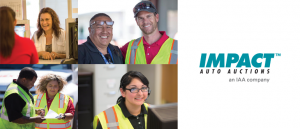
IAA’s Training and Learning Development launched training program LEAD “IAA, Inc. is a global digital marketplace connecting vehicle buyers and sellers. Leveraging leading-edge technology and
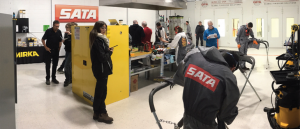
Subsidiary of SATA GmbH & Co. KG. In January 2020 SATA Canada received approval from the Ontario Ministry of Labour, Training and Skills Development to
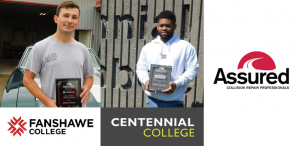
Supporting industry training and development If you are an independent, a multi-shop owner or a member of a repair network, securing young talent for the
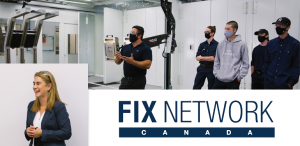
Post-COVID-19, virtual learning has taken centerstage as the aftermarket industry redefines operations to keep technicians on top of industry trends. Despite the challenges, Sophie Pepin
The presence of Aluminum in vehicles continues to exist so it is still critically important for repair facilities to know the procedures that go along with it. Aluminum requires unique attention and adds complexity to the workflow of a repair facility. Everything from panel repair to damage assessment courses are covered in this section.
To be an apprentice a candidate must find an employer who is able to take them on as an apprentice and then make sure to register with their local apprenticeship or trades authority. Apprenticeship combines paid, work-based training (roughly 80 percent) with technical training in a classroom or shop (roughly 20 percent). The trades known nationally as autobody and collision technician, automotive refinishing technician and automotive service technician are all Red Seal trades. The Red Seal program allows qualified trades persons to practice in any province or territory in Canada where the trade is designated. Funding, programs and federal tax incentives are all available for employers so they can hire and train apprentices. Information about occupational standards and financial support for apprentices and businesses is available at red-seal.ca and canada.ca/en/employment-social-development/services/apprentices.html. This section lists organizations across Canada that offer apprenticeship training for auto body technician, automotive refinishing and automotive service trades.
In Canada Auto Body Technician, Automotive Refinish Technician are designated skilled trades and are regulated by provincial apprenticeship legislation. Apprenticeship training is a combination of paid, work-based training as well as short periods of technical training in a classroom or shop. To apprentice a candidate must find an employer who is willing to take them on as an apprentice and then register with their local apprenticeship or trades authority. Particularly, in the automotive trades, pre-apprenticeship training is offered by many colleges. These programs (often called core or foundation programs) make it easier for a candidate to find an employer willing to take them on as well as sometimes can count as a portion of the required apprenticeship training. Automotive service technicians provide repair and service to vehicle systems, including the engine, electrical/electronics, transmission, driveline, steering, suspension and brakes. Collision repair technicians restore damage to the exterior and the interior of motor vehicles. Automotive refinishing technicians paint and refinish automobiles either for collision restoration or custom paint jobs. This section lists organizations across Canada that offer core or foundation programs (pre-apprenticeship training) in the autobody, auto refinish and automotive service sectors.
Direct repair programs are programs offered by many companies and organizations and allow training directly at shop level online or at a designated training centre. This type of training is often also with a certification or I-Car accreditation and involves training about a company’s specific tools, equipment and service. These programs are run by knowledgeable instructors who often have many years of experience in the industry. This allows for training in a real world environment taking a more hands-on approach for a full understanding of a company’s equipment. This experience allows one to build confidence and experience that is often needed to stay ahead of the game diagnosing and repairing makes of automobiles. The following companies offer a wide variety of convenient, cost effective ways of training automotive professionals. Training programs are offered for almost every make and model of vehicle. All classes are 100% technical and delivered by experienced certified training specialists.
TO WORK IN CANADA YOU ARE REQUIRED TO HAVE BOTH HAZARDOUS MATERIALS (WHMIS) EDUCATION AND WORKSITE-SPECIFIC TRAINING. WHMIS is taught by a wide range of providers and includes information about things such as the meaning of information on labels and safety data sheets (SDSes, formerly MSDSes). Once this is complete, workers can get workplace specific training which allows them to learn how to work safely with hazardous products at a worksite. This training teaches employees to answer questions such as “how do you work safely with this hazardous product?” or “How do you deal with an unexpected exposure or spill?”. For information regarding WHMIS visit WHMIS.org. You can also see the Canadian Centre for Occupational Health and Safety at ccohs.ca for more general information. Automotive-specific safety training is often found through local associations. It is important to remain up-to-date on safety measures as new technologies often bring new hazards to a workplace. This section lists some industry-specific, safety-related courses available from I-CAR
To work in Canada you are required to have both hazardous materials (WHIMIS) education and worksite-specific training. WHMIS is taught by a wide range of providers and includes information about things such as the meaning of information on labels and safety data sheets (SDSes, formerly MSDSes). Once this is complete, workers can get workplace specific training which allows them to learn how to work safely with hazardous products at a worksite. This training teaches employees to answer questions such as “how do you work safely with this hazardous product?” or “How do you deal with an unexpected exposure or spill?”. For information regarding WHMIS visit WHMIS.org. You can also see the Canadian Centre for Occupational Health and Safety at ccohs.ca for more general information. Automotive-specific safety training is often found through local associations. It is important to remain up-to-date on safety measures as new technologies often bring new hazards to a workplace. This section lists some industry-specific, safety-related courses available from I-CAR
Technology develops rapidly which means the automotive recycling industry has to keep up with vehicles that are becoming more and more complex. The success of the professional recycler comes down to training to increase safety, efficiency and profitability as the industry expands. The training that is currently being offered covers a wide variety of programs and procedures, to governmental requirements, safety, sales, management, plant management and more. The benefits of the training include staying ahead of the game with environmental and regulatory compliance, industry skill, management, careers, and employee development. Many of the courses are offered online, thus allowing participants to train at their own pace.
Non-structural repair covers a vast variety of topics and encompasses many of the leading-edge technologies employed in modern vehicles. Driver-assist systems and telematics are areas that are constantly changing and that require technicians to continually update their knowledge. The assumption is that advancements in automotive technology will collect around the connected, autonomous, shaped, electric platform (CASE). The ‘Labour Market Watch’ report, published by the Automotive Industries Association, confirms that the automotive repair workforce is aging and much of the experience is pointed toward seasoned professionals. Listed in this section are a variety of courses that can help seasoned professionals and younger employees cope with new vehicle technologies.
The main areas for structural repair are computerized measuring systems, frame analysis and frame repair. Given the preponderance of high-strength steels and ultra-high-strength steels, identification of these advanced materials and knowledge of proper repair procedures is one concern. The efficient use of computerized measuring can maximize repair quality and profitability. In structural courses, you are provided with the opportunity to acquire the theoretical and practical knowledge and skills to ensure you have a competitive and leading edge in the field. Both online and hands-on courses related to structural repair are available.
As new materials make their way into vehicles it becomes imperative for technicians to update their knowledge of proper repair procedures. Spot welding, for example, is emerging as an essential technique for some vehicles. In addition to knowing how to use newer welding equipment, technicians may want to expand their knowledge of weld theory, metallurgy and testing. This section lists college-level welding programs, apprenticeship training and shorter, industry-led training opportunities related to welding. See also: the Aluminum section for courses specific to aluminum repair, including welding of aluminum, and the Structural section.
As the autobody and collision repair industry becomes more complex with new materials, technologies, techniques and environmentally friendly products and equipment it is important to stay up-to-date. Safe operating conditions and quality of appearance are both important things that body and paint technicians have to pay close attention to. Courses in the paint and refinish sector range from product training to improving paint centre productivity to colour theory. Refresher training as well as training to learn new techniques is available to collision centre operations and can improve efficiency as well as increase experience levels. Courses available to Canadians, from the industry’s major suppliers, are listed below.
By restoring a vehicle to its pre-accident condition and helping ensure its safety as designed by the manufacturer you are benefitting both your business and your customers. Nowadays it is not enough to simply know how to physically replace components you need to understand how they all work together. Pursing manufacturer-specific training can help you to meet the complex needs of repairing modern vehicles. Some vehicle manufacturers embed training requirements within the framework of a collision repair certification program, and then provide training only to certified facilities. More broadly-available, brand specific courses are listed below.
An OEM certification represents more than a commendation vouching for a shop’s reputation – it shows that their technicians are the most-qualified to make any repair with the latest technology in the industry. Only with OEM certification can it be guaranteed that a shop knows exactly how a manufacturer intended for their product to be repaired.
Read more to learn the requirements to become OEM certified by the top manufacturers in Canada!
© Training Directory ~ All Rights Reserved